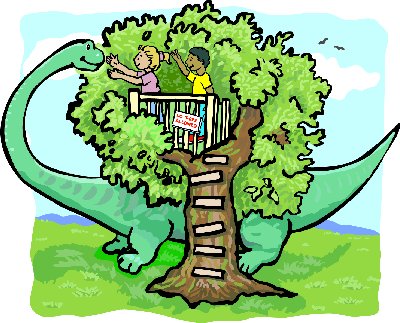  |
|||
|
|
|
|
|
  |
|||
|
|
|
|
|
 Join the Dippy Kids Club
Kids ages 3 to 12 are invited to become members of a new club devoted to Dippy, the museum’s most famous dinosaur. Membership is free. Members receive a poster of Dippy, dinosaur activity packet, and membership card. Show your card each time you come to the museum for a special Dippy badge and sticker that signals your participation in the club. You may name special adults as honorary members, too. Every month a newsletter will arrive in your mailbox and by e-mail if you’re online. the newsletter will arrive by e-mail as well). And when you click onto the museum’s web page, you will find special activities for Dippy Kids Club members only. Dippy Kids Club members will receive invitations to a special Dippy Birthday Party in July. Come for the colossal cake and the chance to meet museum paleontologists. Be sure to sign up for the Dippy Kids Club next time you visit the museum. Dippy Facts The bones of Diplodocus carnegii—so named because Andrew Carnegie funded the paleontological "dream team" that searched for its bones—were unearthed in Wyoming beginning in 1899. Shipped to Carnegie Museum in 130 crates, Dippy went on display in 1907 and was the first dinosaur skeleton in Dinosaur Hall. Length (head to tail): About 88 feet Weight: About 10 tons Diet: Herbivore Habitat: Land Dates: 147 to 137 million years ago Skeletal Features: Dippy was one of the longest dinosaurs ever. He had a short body with long flexible neck and tail. Dippy had very weak teeth in the front of his mouth, and no chewing or grinding teeth in the back of his mouth. He may have swallowed stones to help grind up its food.Powdermill Nature Reserve: "Jewel" of Laurel Highlands (383 words) "The forest grows. The forest also changes in delicate respect to climate, to geophysical happenings, to the wheel of time itself.... This is the unparalleled offering of the Reserve—the gift of time." In the midst of the Laurel Highlands, a little more than an hour’s drive from Pittsburgh, Powdermill Nature Reserve offers over 2,200 acres of woodlands, streams, open fields, ponds, and thickets. Since 1956, it has served as a research and education center and as a nature preserve for Carnegie Museum of Natural History.--John Guilday Recently, a national evaluation committee reviewing Powdermill research and public programs called it a "jewel." Public programs make use of the Reserve’s nature center, three-quarter-mile network of trails, butterfly garden, herb garden, and exhibits about local ecosystems and archaeology. Hundreds of participants enjoy activities at Powdermill each year. Powdermill’s most celebrated environmental project is "birdbanding" (labeling birds who migrate through the reserve). Over the past 39 years, banders have handled a half-million birds. In 1999 alone, 7,000 new birds were banded. Research on Powdermill’s populations of mammals, birds, amphibians, and reptiles are the basis of many educational offerings for the public. Looking for something different this spring and summer? Sunday programs and weeklong summer camps for children ages 5 through 12 give people of all ages the opportunity to explore the ever-changing world of nature. For information, call (724) 593-6105 or visit the Museum of Natural History website under "Educational Programs." |
|
|
|
|
|
|
All rights reserved. E-mail: carnegiemag@carnegiemuseums.org |
|||